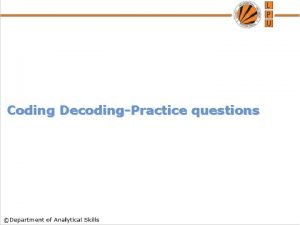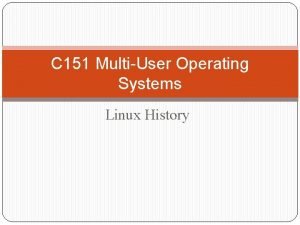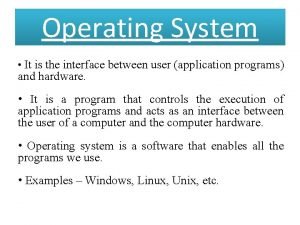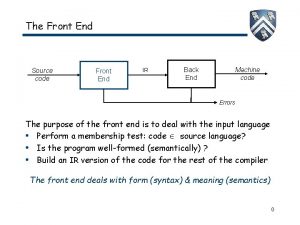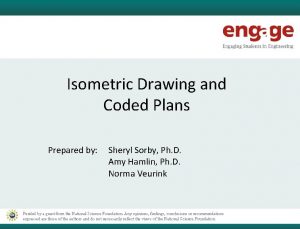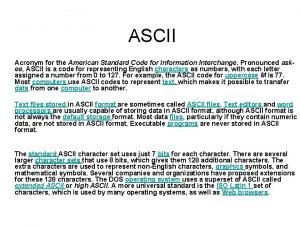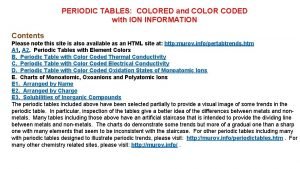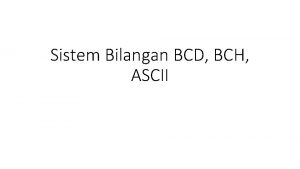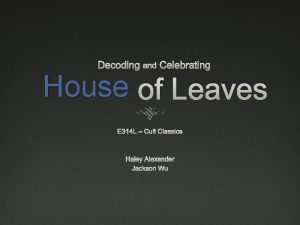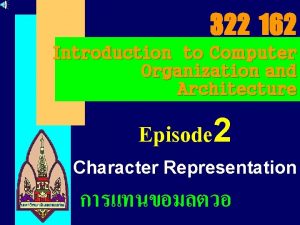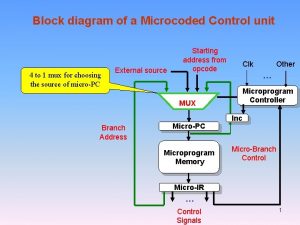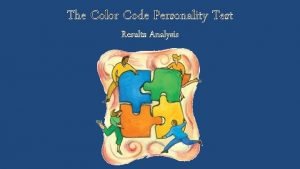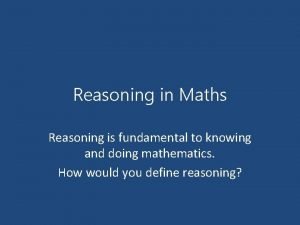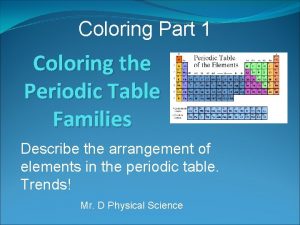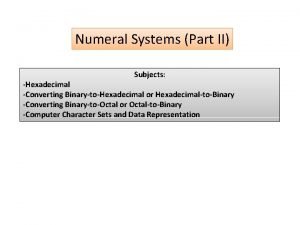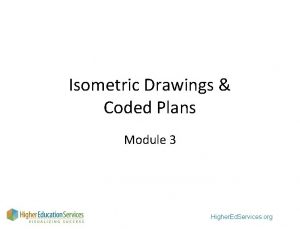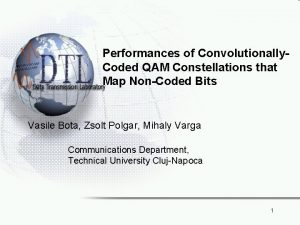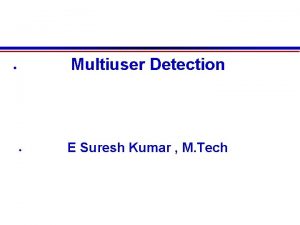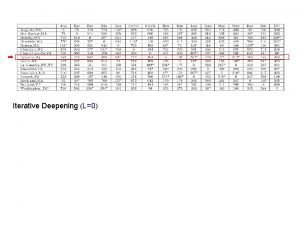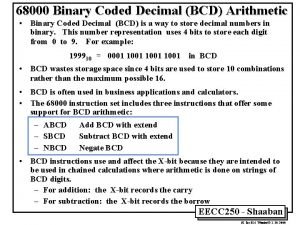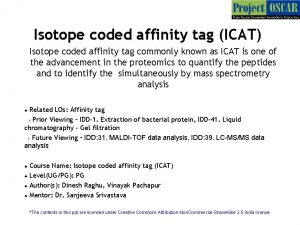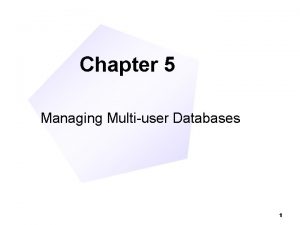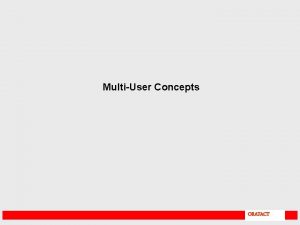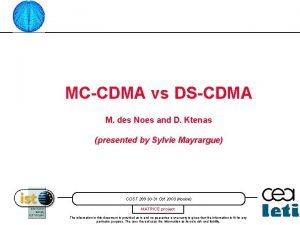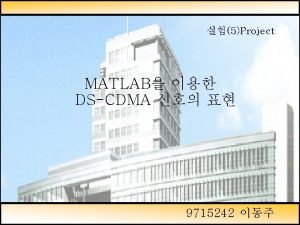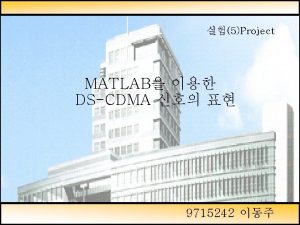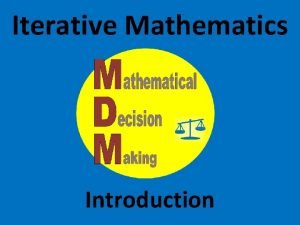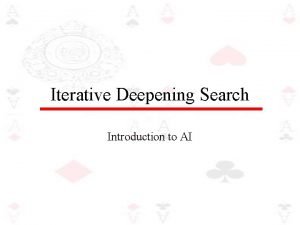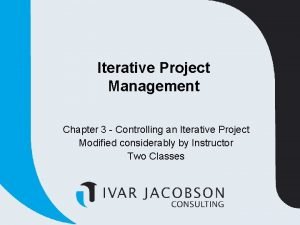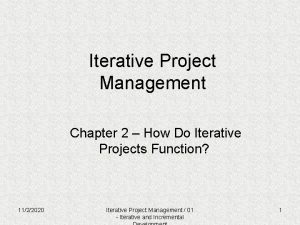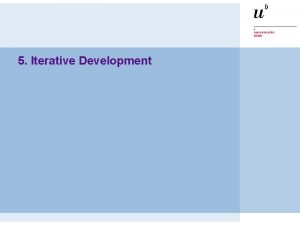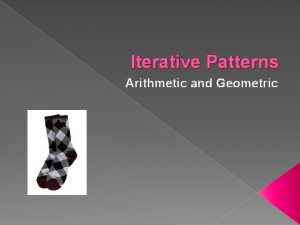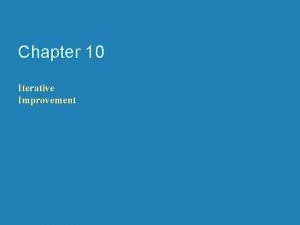Iterative Multiuser Detection for Convolutionally Coded Asynchronous DSCDMA





















- Slides: 21

Iterative Multiuser Detection for Convolutionally Coded Asynchronous DS-CDMA 9 th IEEE International Symposium on Personal, Indoor, and Mobile Radio Communications Boston, MA September 9, 1998 VIRGINIA POLYTECHNIC INSTITUTE & STATE UNIVERSITY MPRG MOBILE & PORTABLE RADIO RESEARCH GROUP Matthew Valenti and Brian D. Woerner Mobile and Portable Radio Research Group Virginia Tech Blacksburg, Virginia

Introduction n Performance of multiple access systems can be improved by multiuser detection (MUD). Introduction u u u F n Suboptimal approximations • Decorrelator, MMSE, DFE, PIC, SIC, etc. Most studies on MUD concentrate on the uncoded performance. u u 9/9/98 Verdu, Trans. Info. Theory ‘ 86. Implemented with Viterbi algorithm, complexity O(2 K). Optimal MUD is too complex for large K. u Here we consider the effects of coding. We propose a receiver structure that approximates joint MUD and FEC-decoding. The algorithm allows for asynchronous users and fading.

MUD for Coded DS-CDMA n Practical DS-CDMA systems use error correction coding (convolutional codes). u Introduction u u n If MUD and FEC are to be used, the interface should be improved. u 9/9/98 Soft-decision decoding outperforms hard-decision decoding (by about 2. 5 d. B). However, the optimal MUD passes hard-decisions to the channel decoder! Therefore it is possible for the coded performance of a system with MUD to be worse than the coded performance without the MUD. u The decoder for turbo codes gives insight on how to improve this interface. Use soft-decisions and feedback.

Relation to Other Work n T. Giallorenzi and S. Wilson u Optimal joint MUD/FEC-decoding Background F F F u Suboptimal approaches. F F F 9/9/98 Trans. Comm. Aug. 1996 Uses a “super-trellis”. High complexity: O(2 WK) Trans Comm. Sept. 1996 Separate MUD and Channel decoding. Soft values passed from MUD to channel decoder. No feedback used. See also P. Hoeher’s paper at ICUPC ‘ 93.

Relation to Other Work n M. Reed, C. Schlegel, et al u Feedback from FEC-decoder to MUD Background F u Synchronous DS-CDMA F u PIMRC ‘ 97 Close to single-user bound for K=5 users and spreading gain of N=7. F 9/9/98 Turbo Code Symp ‘ 97, ICUPC ‘ 97 Turbo codes F u “One-shot” detector. Convolutional codes F u Similar to the decoder for turbo codes. AWGN channel

Relation to Other Work n M. Moher u Background u Feedback from FEC-decoder to MUD. Multiuser systems with high signal correlation. F u u Random interleaving. Synchronous systems F u Comm. Letters, Aug. 1998 Close to single user bound for K=5, 10 and =0. 6, 0. 75 F F 9/9/98 Trans. Comm. , July 1998 Asynchronous systems F u FDMA with overlapping signals. K-symmetric channel. AWGN

Turbo Codes and Iterative Decoding Turbo Processing n 9/9/98 A turbo code is the parallel concatenation of two convolutional codes. u u An interleaver separates the code. Recursive Systematic Convolutional (RSC) codes are typically used. Dat a interleav er RSC Encod er #1 Output

Turbo Decoding Turbo Processing n A turbo decoder consists of two elementary decoders that work cooperatively. u Soft-in soft-out (SISO) decoders. F u Implemented with Log-MAP algorithm Feedback. F F Each decoder produces a posteriori information, which is used as a priori information by the other decoder. Iterative A priori probability A priori Received Data 9/9/98 SISO probability Decod SISO er Decoder #1 #2 Estimated Data

Serial Concatenated Codes Turbo Processing n The turbo decoder can also be used to decode serially concatenated codes. u Data Typically two convolutional codes. Outer Convolution al Encoder Inner SISO Decode r deinterleav er n(t) AWGN Turbo Decoder interleaver APP 9/9/98 interleaver Inner Convolution al Encoder Outer SISO Decoder Estimated Data

Turbo Equalization Turbo Processing n The “inner code” of a serial concatenation could be an Intersymbol Interference (ISI) channel. u Data ISI channel can be interpreted as a rate 1 code defined over the field of real numbers. (Outer) Convolution al Encoder ISI Channel Turbo Equalizer interleaver APP 9/9/98 interleaver SISO Equaliz er deinterleav er n(t) AWGN (Outer) SISO Decoder Estimated Data

Turbo Multiuser Detection n The “inner code” of a serial concatenation could be a MAI channel. Turbo MUD u 9/9/98 u u MAI channel can be thought of as a time varying ISI channel. MAI channel is a rate 1 code with time-varying coeficients over the field of real numbers. The input to the MAI channel consists of the encoded and interleaved sequences of all K users.

System Diagram Convolution al Encoder #1 “multiuser interleaver” interleaver #1 Turbo MUD MUX Convolution al Encoder #K n(t) AWGN interleaver #K Turbo MUD multiuser interleaver APP SISO MUD 9/9/98 MAI Channel multiuser deinterleav er Bank of K SISO Decoders Estimated Data

System Model MAI Channel Model n Received Signal: n Where: u u u n 9/9/98 ak is the signature waveform of user k. k is a random delay (i. e. asynchronous) of user k. Pk[i] is received power of user k’s ith bit (fading ampltiude). Matched Filter Output:

Optimal Multiuser Detection Algorithm: Setup Place y and b into vectors: n Place the fading amplitudes into a vector: n Compute cross-correlation matrix: MUD n 9/9/98

Optimal MUD: Execution n Run Viterbi algorithm with branch metric: where MUD u n Note that most derivations of the optimal MUD drop the p(b) term. u u n 9/9/98 Here we keep it. The channel decoder will provide this value. The algorithm produces hard bit decisions. u Not suitable for soft-decision channel decoding.

Soft-Output MUD n n Several algorithms can be used to produce softoutputs (preferably log-likelihood ratio). Trellis-based. u MAP algorithm MUD F F u SOVA algorithm F n Hagenauer & Hoeher, Globecom ‘ 89 Non-trellis-based. u u 9/9/98 Log-MAP, Robertson et al, ICC ‘ 95 OSOME, Hafeez & Stark, VTC ‘ 97 u Suboptimal, reduced complexity. Linear: decorrelator, MMSE. Subtractive (nonlinear): DFE, SIC, PIC.

Simulation Parameters n K=5 users u u Example u n Convolutional Code u u n 24 by 22 block interleaver (L=528). Log-MAP decoding. u 9/9/98 Constraint length 3. Rate 1/2. Interleaving u n Power controlled (same average power). N=7 (processing gain), code-on-pulse. Random spreading codes. u Both MUD and channel decoder. 3 iterations.

Simulation Results: AWGN Channel Introduction n After the second iteration, performance is close to single-user bound for BER greater than 10 -4. u u n Only a slight incremental gain by performing a third iteration. u 5/19/98 For BER less than 10 -4, the curves diverge. This behavior is similar to the “BER floor” in turbo codes. The extra processing for the third iteration is not worth it.

Simulation Results: Rayleigh Flat-Fading Channel n Fully-interleaved Rayleigh flat-fading. Introduction u n i. e. fades are independent from symbol to symbol. After second iteration, performance is close to the single-user bound. u u The curves do not diverge as they did for AWGN. Why? F F 5/19/98 The instantaneous received power is different for the different users. Therefore the MUD has one more parameter it can use to separate signals.

Conclusion n A strategy for iterative MUD/FEC-decoding is proposed. u Conclusion u F F n independently faded signals code and bit asynchronism. Proposed strategy was illustrated by simulation example. u u 9/9/98 Based on the concept of turbo processing. Similar to other researchers’ work, but the algorithm is generalized to allow: Significant performance gain by performing 2 iterations. When signals are independently faded, the algorithm exploits the differences in instantaneous signal power.

Future Work n The study assumes perfect channel estimates. u Conclusion u n The proposed strategy is still very complex u u n O(2 W+2 K) per iteration. Future work should consider the use of reduced complexity multiuser detectors. This structure could also be used for TDMA systems. u u u 9/9/98 The effect of channel estimation should be considered. The estimator could be incorporated into the feedback loop. u TDMA: only a few strong interferers, small K. Highly correlated signals, can take advantage of this system. Can use observations from multiple base stations. See our work at VTC, ICUPC, and Globecom CTMC.
 Brass is coded as 63516
Brass is coded as 63516 If stick is coded as rshbj then reply is coded as
If stick is coded as rshbj then reply is coded as Multiuser operating system
Multiuser operating system Interface between user and hardware
Interface between user and hardware Smart uml
Smart uml Hand coded scanner
Hand coded scanner Isometric sketching
Isometric sketching Green kit std
Green kit std Acronym of ascii
Acronym of ascii Periodic table colored
Periodic table colored Hartman personality test results
Hartman personality test results Apa perbedaan bcd dan bch
Apa perbedaan bcd dan bch House of leaves codes
House of leaves codes Extended binary coded decimal interchange code
Extended binary coded decimal interchange code Micro coded controller diagram has
Micro coded controller diagram has Color blue personality
Color blue personality Coded hundred square answers
Coded hundred square answers Alkali metals periodic table
Alkali metals periodic table Binary coded decimal counter
Binary coded decimal counter 12 lead colors
12 lead colors Addition and subtraction of hexadecimal numbers
Addition and subtraction of hexadecimal numbers Coded plan isometric sketch
Coded plan isometric sketch
